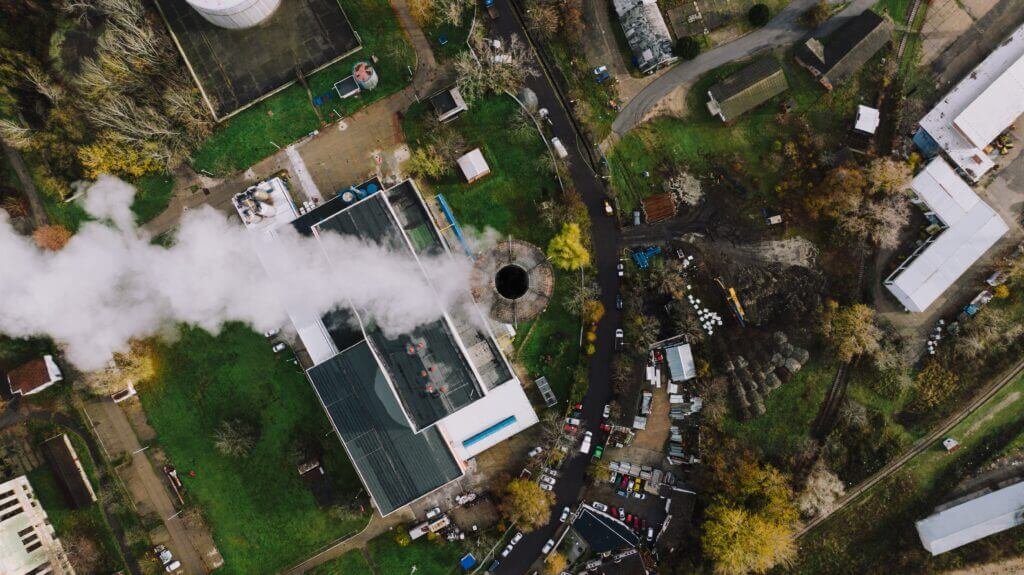If you’re a city dweller with a green thumb, you may find yourself wondering: what are the best herbs and vegetables to grow in an urban garden? With limited space and resources, it’s important to choose plants that thrive in city environments and can be easily incorporated into everyday cooking. In this article, we’ll explore a curated list of top herbs and vegetables that are well-suited for urban gardening, giving you the tools to create your own thriving green oasis in the heart of the concrete jungle. So get ready to roll up your sleeves, grab a trowel, and let’s discover the perfect plants for your urban garden! Urban gardening is a fantastic way to make the most of limited space while reaping numerous benefits. Whether you have a small balcony or a rooftop garden, incorporating herbs and vegetables into your urban landscape can have a positive impact on your health, the environment, and your community. In this comprehensive article, we will explore the many advantages of urban gardening, discuss the top herbs and vegetables to consider, delve into tips for successfully growing herbs and vegetables in urban settings, explore container gardening techniques, vertical gardening options, companion planting strategies, and address common pests and diseases that can arise in urban gardens. Additionally, we will touch on the transformative power of community gardening initiatives. So let’s dive right in and discover the rich world of urban gardening together!

Benefits of Urban Gardening
Improves Air Quality
One of the most significant benefits of urban gardening is its contribution to improving air quality. Plants, through the process of photosynthesis, absorb carbon dioxide and release oxygen, effectively reducing air pollution. By cultivating plants in urban spaces, you can contribute to combating the negative effects of air pollution and create a healthier environment for yourself and your community.
Reduces Food Miles
Another advantage of urban gardening is the reduction of food miles. Food miles refer to the distance food travels from the farm to your plate. By growing your own herbs and vegetables in urban settings, you minimize the need for transportation and decrease the carbon emissions associated with long-distance food distribution. Not only does this contribute to reducing your carbon footprint, but it also allows you to enjoy fresh, locally grown produce year-round.
Increases Access to Fresh Produce
Urban gardening provides an excellent opportunity to increase access to fresh produce in areas that may lack convenient access to grocery stores or farmers’ markets. By growing your own herbs and vegetables, you can ensure a regular supply of nutritious and flavorful food, enhancing your overall well-being. Additionally, urban gardening allows you to cultivate a diverse range of unique and heirloom varieties that may not be readily available in commercial outlets.
Promotes Physical Activity
Engaging in urban gardening is a wonderful way to incorporate physical activity into your daily routine. From digging and planting to watering and harvesting, tending to your herbs and vegetables requires movement and can serve as a low-impact exercise. Plus, the satisfaction of seeing your plants thrive and enjoying the fruits of your labor brings a sense of fulfillment and promotes mental well-being.
Enhances Urban Aesthetics
Urban gardening has a transformative effect on the visual appeal of cities and neighborhoods. Adding greenery and vibrant colors to urban environments softens the concrete jungle and creates a more inviting and visually appealing landscape. Whether it’s a window box bursting with herbs or a rooftop garden filled with vegetables, urban gardening adds a touch of natural beauty to any setting, contributing to a more relaxing and pleasant atmosphere.
Choosing the Right Herbs
When it comes to growing herbs in urban gardens, you want to choose varieties that thrive in limited spaces and are versatile in their culinary and medicinal uses. Here are a few top herbs that are well-suited for urban gardening:
Basil
Basil is a popular herb renowned for its distinctive aroma and is a staple in many cuisines. Whether you opt for the classic sweet basil, purple basil, or lemon basil, this herb is a must-have for any urban garden. Basil thrives in well-drained soil and requires a sunny location to flourish.
Mint
Mint is a refreshing herb that can grow vigorously in urban gardens. Its aromatic leaves are excellent for flavoring dishes, making herbal teas, or even creating homemade beauty products. Mint prefers moist soil and moderate sunlight, making it a great option for urban settings with partial shade.
Rosemary
Rosemary is a versatile herb that adds a delightful flavor to a wide range of dishes. Its woody stems and fragrant leaves make it a visually appealing addition to any urban garden. Rosemary thrives in well-draining soil and full sun, so be sure to provide it with ample sunlight in your urban setting.
Coriander
Coriander, also known as cilantro, is a popular herb that adds a fresh and zesty flavor to many culinary creations. The leaves and seeds of coriander are used in various dishes worldwide. This herb prefers cool temperatures and partial shade, making it ideal for urban gardens.
Parsley
Parsley is a versatile herb that can be used as a garnish or an ingredient in a variety of dishes. With its vibrant green leaves and mild flavor, parsley is a fantastic addition to any urban garden. It thrives in well-drained soil and can tolerate partial shade, making it a suitable choice for urban gardeners.

Tips for Growing Herbs in Urban Settings
Successfully growing herbs in urban settings requires careful attention to a few key factors. Here are some essential tips to consider when cultivating herbs in limited spaces:
Selecting Containers for Limited Spaces
In urban gardening, space is at a premium, so utilizing containers is essential. When selecting containers for growing herbs, opt for ones that are appropriate for the size of the plant and have drainage holes to prevent waterlogging. Hanging baskets, window boxes, and vertical planters are excellent options for maximizing space.
Providing Sufficient Sunlight
Most herbs require around 6-8 hours of direct sunlight daily to thrive. Before starting your urban garden, assess the lighting conditions in your chosen location. Placing your herbs near south-facing windows or in areas with maximum sunlight exposure will help ensure that your plants receive the light they need for healthy growth.
Watering Requirements
Maintaining proper watering is crucial for herb growth. It’s essential to strike a balance between under-watering and over-watering to prevent soil moisture-related issues. Regularly check the moisture level in the soil by sticking your finger about an inch deep. If it feels dry, it’s time to water. Additionally, consider using self-watering containers or incorporating drip irrigation systems for efficient water usage.
Pruning and Harvesting Techniques
To encourage healthy growth and higher yields, it’s important to regularly prune and harvest your herbs. Regular pruning helps prevent plants from becoming leggy and encourages bushier growth. When harvesting, trim the outer leaves or stems, leaving enough growth for the plant to continue thriving. Harvesting herbs regularly also encourages continual growth throughout the growing season.
Choosing the Right Soil and Fertilizer
Selecting the appropriate soil mix and fertilizer is essential for ensuring the health and productivity of your herb garden. Opt for well-draining soil that is rich in organic matter. Consider using a balanced, slow-release fertilizer or organic options to provide essential nutrients to your herbs without the risk of overfeeding.
Selecting Vegetables for Urban Gardens
Growing vegetables in urban gardens offers a unique opportunity to enjoy fresh and homegrown produce. When selecting vegetables for your urban garden, consider the following options:
Tomatoes
Tomatoes are a classic choice for urban gardens due to their versatility and prolific growth. They can be grown in containers, hanging baskets, or even on balconies with the support of stakes or cages. With a variety of sizes, colors, and flavors available, you’ll find the perfect tomato variety to suit your taste and growing space.
Lettuce
Lettuce is a fast-growing leafy green that thrives in containers and small spaces, making it an excellent choice for urban gardens. From crisp romaine lettuce to vibrant loose-leaf varieties, there are numerous options to explore. One of the advantages of growing lettuce is that you can enjoy multiple harvests by simply picking the outer leaves and allowing the plant to regrow.
Spinach
Spinach is a nutrient-packed vegetable that can be easily grown in urban gardens. It prefers cool temperatures and can tolerate partial shade, making it suitable for urban environments. With its rich green leaves, spinach adds beauty and nutritional value to your garden. Harvest spinach by continually plucking the outer leaves, allowing the center leaves to keep growing.
Peppers
Peppers come in various shapes, sizes, and heat levels, making them a versatile addition to any urban garden. Whether you prefer sweet bell peppers or spicy chili peppers, these vibrant plants can be grown in containers or raised beds, even in compact urban settings. Peppers require full sun, warm temperatures, and well-drained soil to thrive.
Carrots
Carrots are root vegetables that can adapt well to urban gardening. They can be grown in containers, raised beds, or even window boxes. Choose varieties that are smaller and suitable for growing in confined spaces. Carrots prefer loose, well-draining soil, and it’s important to ensure they receive consistent moisture throughout the growing season for optimal growth.

Container Gardening for Vegetables
Container gardening allows urban gardeners to take advantage of any available space to grow vegetables. Here are some key considerations for successful container gardening:
Choosing Appropriate Containers
When selecting containers for vegetable gardening, choose ones that are deep and wide enough to accommodate the root system of the plant. For larger vegetables such as tomatoes or peppers, consider using 5-gallon or larger containers. Smaller plants like lettuce or herbs can thrive in shallower containers. Ensure that the containers have drainage holes to prevent water accumulation.
Spacing and Placement Considerations
Proper spacing is crucial to ensure healthy growth and adequate airflow between the plants. Research the spacing requirements of the specific vegetable varieties you are growing and plan accordingly. Place taller plants at the back or center of the container and cascading or trailing plants at the edges to maximize space and create an aesthetically pleasing arrangement.
Watering and Drainage
Container plants require more frequent watering than plants in the ground since containers tend to dry out more quickly. Regularly check the moisture level of the soil and water when it feels dry. Pour water slowly and ensure it reaches the root zone. Additionally, ensure that the containers have proper drainage to prevent waterlogged soil, which can lead to root rot.
Supporting Structures for Climbing Crops
Climbing crops such as tomatoes, cucumbers, or beans require support to grow vertically and maximize space. Staking, trellises, or cages can be used to provide support to these plants. Consider the weight and growth habit of the vegetable when selecting the appropriate support structure.
Pest and Disease Management
Container gardening doesn’t make plants entirely immune to pests and diseases. Monitor your plants regularly for any signs of infestation or disease. Implement preventive measures such as regular cleaning, proper spacing, and good ventilation to minimize the risk. If necessary, consider using organic pest control methods to protect your plants and maintain their health.
Vertical Gardening Techniques
Vertical gardening is an innovative approach to maximize space in urban environments. Here are some techniques to consider when incorporating vertical gardening in your urban garden:
Use of Trellises and Arbors
Trellises and arbors provide valuable vertical growing space for climbing plants like cucumbers, beans, or grapes. These structures not only support the plants but also create a visually appealing focal point in the garden. Consider using sturdy materials such as bamboo or metal for durability.
Hanging Baskets
Hanging baskets are another vertical gardening option that allows you to grow a variety of plants in a suspended space. Flowers, herbs, and small vegetables like cherry tomatoes or trailing varieties of peppers can thrive in hanging baskets. Ensure that the baskets are securely hung and check the moisture level regularly, as hanging baskets can dry out quickly.
Wall-Mounted Planters
Wall-mounted planters are an excellent choice for those with limited ground space. These planters can be attached to walls, fences, or balcony railings, making efficient use of vertical space. Various vegetables, herbs, or flowers can be grown in these planters, enhancing the aesthetics of your urban environment.
Vertical Towers and Hydroponics
Vertical towers and hydroponic systems are innovative techniques that allow for growing plants in a vertical arrangement without the need for soil. These setups are ideal for growing herbs, leafy greens, and certain vegetables. Vertical towers are equipped with multiple planting pockets, each containing a plant, while hydroponic systems use nutrient-rich water instead of soil to nourish the plants.
Utilizing Balconies and Rooftops
Balconies and rooftops often provide ample space for vertical gardening. Utilize hanging baskets, trellises, or raised beds to create a lush and productive garden in these urban settings. Be mindful of weight restrictions and consult with professionals, if necessary, to ensure proper installation and safety measures are taken.
Companion Planting Strategies in Urban Gardens
Companion planting involves strategically grouping plants together to encourage mutual benefits. Here are some companion planting strategies to consider in your urban garden:
Tomatoes and Basil
Tomatoes and basil are classic companions in the garden. Basil helps repel pests that commonly affect tomatoes while enhancing the flavor of the fruits. Planting basil near tomatoes can improve the overall health and productivity of both plants.
Carrots and Onions
Carrots and onions make great neighbors in the garden. Onions repel pests that often afflict carrots, while carrots help deter onion pests as well. This natural partnership can help protect both crops and improve their health and yield.
Lettuce and Radishes
Lettuce and radishes are compatible companions that can be planted together. Radishes grow relatively quickly and can be used as a natural marker for rows of slower-growing lettuce. The lettuce provides shade and helps retain moisture for the radishes, while the radishes act as a natural pest deterrent for lettuce.
Beans and Corn
Beans and corn have a symbiotic relationship known as the “Three Sisters” planting technique. The tall cornstalks provide support for the climbing beans, while the beans enrich the soil with nitrogen, benefiting the corn. This traditional Native American planting strategy maximizes space and boosts productivity.
Cucumbers and Dill
Cucumbers and dill are ideal companions that share similar growth requirements and repel common pests when grown together. Planting dill near cucumbers can help deter pests such as cucumber beetles and aphids. The fragrant dill also adds a delightful aroma to your garden.
Common Pests and Diseases in Urban Gardens
Although urban gardens offer an abundance of benefits, they can also be prone to certain pests and diseases. Here are some common ones to be aware of:
Aphids
Aphids are small insects that feed on plant sap, causing leaves to become distorted and yellow. They reproduce quickly, so early detection and prevention are crucial. Regularly inspect your plants for signs of aphid infestations and utilize organic pest control methods such as insecticidal soap or companion planting with beneficial insects like ladybugs.
Snails and Slugs
Snails and slugs can be bothersome pests in urban gardens, particularly during damp weather. These mollusks feed on leaves, leaving behind large holes and a slimy trail. To manage these pests, consider implementing physical barriers like copper tape or diatomaceous earth around vulnerable plants or use organic baits tailored for snail and slug control.
Mildews and Molds
Mildews and molds are fungal diseases that can affect a variety of plants, especially during periods of high humidity or poor air circulation. Powdery mildew and downy mildew are common culprits in urban gardens. Adequate spacing, good ventilation, and regular monitoring can help prevent these diseases. If necessary, treat affected plants with organic fungicides or homemade remedies such as a baking soda and water solution.
Caterpillars
Caterpillars are the larval stage of butterflies and moths and can be detrimental to your plants if left uncontrolled. They voraciously feed on leaves, causing extensive defoliation. Handpicking caterpillars can be effective for small infestations, or you can attract natural predators like birds or beneficial insects to your garden to manage these pests.
Whiteflies
Whiteflies are small, winged insects that feed on plants, sucking the sap and causing yellowing and wilting. They often congregate on the undersides of leaves, forming a white, powdery appearance. Sticky traps and introducing biological control agents such as predatory mites or parasitic wasps can help control whitefly populations.
Organic Pest and Disease Management
Implementing organic pest and disease management practices in your urban garden promotes the health of your plants and the environment. Here are some strategies to consider:
Integrated Pest Management Practices
Integrated Pest Management (IPM) involves utilizing a combination of preventive measures, monitoring techniques, and natural control methods to manage pests effectively. These methods include regular inspection, crop rotation, physical barriers, attracting beneficial insects, and using organic pesticides sparingly as a last resort.
Beneficial Insects and Companion Planting
Introducing beneficial insects such as ladybugs, lacewings, or predatory wasps can help control pest populations naturally. These beneficial insects prey on common garden pests like aphids or caterpillars. Companion planting can also attract beneficial insects to your garden, enhancing pest control efforts.
Organic Sprays and Homemade Remedies
When organic pest control is necessary, there are various options available. Organic sprays made from plant extracts like neem oil or garlic can be effective against certain pests. Homemade remedies such as soap sprays or chili pepper solutions can also help deter pests. It’s important to follow instructions and use organic products responsibly.
Crop Rotation and Soil Health
Rotating crops each season can help minimize pest and disease buildup in the soil. Different plant families are susceptible to specific pests and diseases, so practicing crop rotation disrupts the life cycles of these pests and promotes overall soil health.
Proper Plant Spacing and Ventilation
Maintaining adequate plant spacing and good air circulation is essential to prevent the development and spread of diseases. Overcrowded plants will have restricted airflow, which creates a favorable environment for fungal diseases. Pruning excess growth and thinning out crowded areas helps promote healthy plants and minimize disease risks.
Community Gardening in Urban Environments
In recent years, community gardening has gained popularity as a way to bring people together, encourage sustainable practices, and enhance urban environments. Here are some benefits and considerations to keep in mind when joining or initiating a community gardening project:
Benefits of Communal Gardening Projects
Community gardening provides numerous benefits beyond personal enjoyment. It fosters a sense of community and promotes social interaction among participants. It creates opportunities for shared learning, knowledge exchange, and skill development. Additionally, community gardens can offer access to fresh produce, strengthen food security, and beautify urban spaces.
Finding and Joining Local Initiatives
To participate in a community gardening project, start by researching local initiatives in your area. Reach out to local government bodies, community centers, or gardening associations for information on existing projects. Social media platforms, community notice boards, or word of mouth can also be valuable sources of information.
Cooperative Gardening Practices
Community gardening typically involves collaboration and shared responsibilities. Participants work together to plan, maintain, and harvest the communal garden. Cooperative practices may include rotating tasks, sharing tools and resources, and collectively making decisions about the garden’s management and development.
Sharing Excess Produce and Seeds
One of the joys of community gardening is the abundance of produce that can be shared among participants. Extra fruits, vegetables, or herbs can be distributed among community members or donated to local food banks or charitable organizations. Additionally, seeds harvested from the garden can be saved and shared, promoting sustainability and self-sufficiency.
Educational Opportunities for All Ages
Community gardens provide a unique platform for learning and education. They offer educational opportunities for all ages, from children to seniors. Garden workshops, training sessions, and mentorship programs can teach community members about organic gardening practices, environmental stewardship, and sustainable living. Furthermore, community gardens can serve as vibrant outdoor classrooms for schools and inspire future generations to appreciate and care for nature.
In conclusion, urban gardening presents a world of possibilities for individuals looking to make the most of limited spaces and contribute to their community and environment. By growing herbs and vegetables in urban settings, you can enjoy improved air quality, reduced food miles, increased access to fresh produce, enhanced physical activity, and a more aesthetically pleasing urban landscape. With the tips and techniques provided, you can successfully cultivate herbs and vegetables in limited spaces, explore container and vertical gardening, practice companion planting, manage pests and diseases organically, and even engage in community gardening initiatives. So step into the world of urban gardening, and let your green thumb thrive as you create a lush and bountiful oasis right in the heart of the city!


